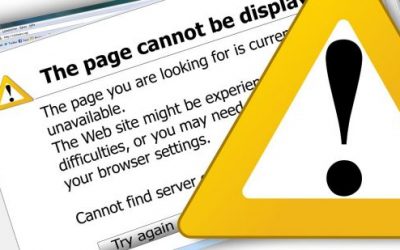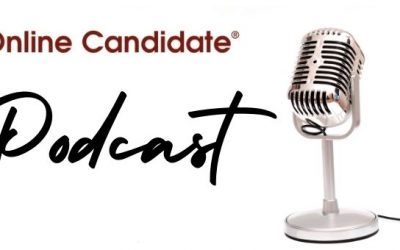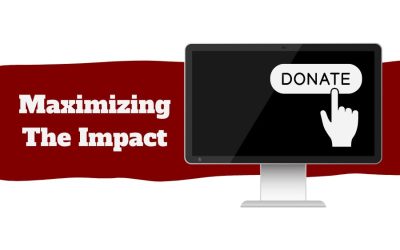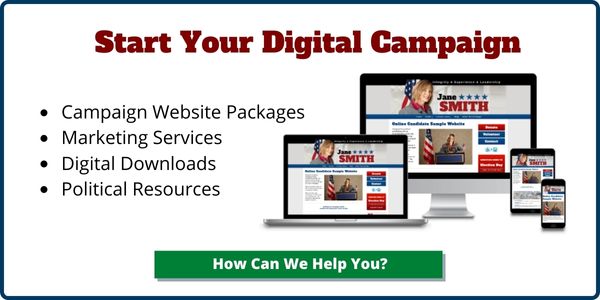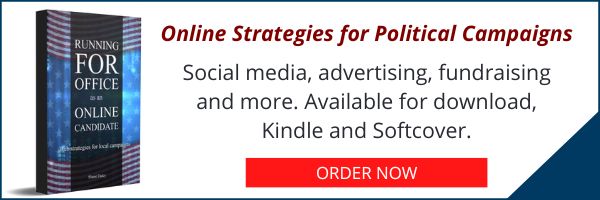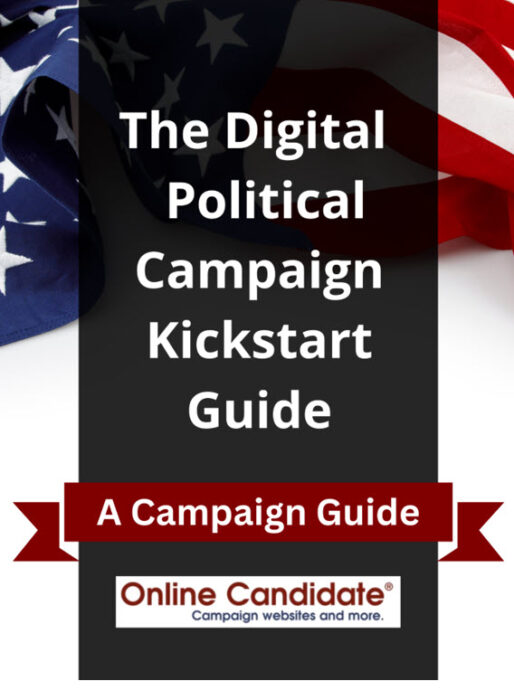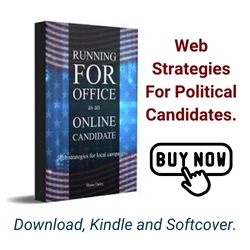Maximize Your Online Campaign Success: Avoid These 5 Mistakes
Online politics regularly provides voters with campaign gaffes, mistakes, and embarrassing moments. There are many opportunities for political campaigns and candidates to make online blunders.
Here are five of the most common and avoidable problems that we see every election season.
Writing website content in the first person
Many candidates use their site’s home page to write an open letter to voters. Too many ‘I’, ‘me’ and ‘my’ words can hurt your campaign website’s ranking in the search engines. If you want your site to rank well for searches of your name, then your name must be included in your site content.
If you use first person copy, try using ‘pull boxes’ that include your name. Combined with a good page title, page description, and image tags, you can overcome the limitations of first person copy.
Related: Why Your About Page Ranks Higher Than Your Home Page
Failing to take advantage of online fundraising opportunities
It doesn’t matter how small your campaign may be. Once you open a campaign bank account and have a website, you can accept online donations. A number of fundraising services that cater to political campaigns. These services provide online donation forms, social media tools, and the ability to easily process and deposit donations directly into your bank account.
Services designed specifically for political campaigns will handle disclosure and tracking requirements for you. (This is helpful for state or FEC reporting, so your treasurer will thank you!) Some services also allow you to collect recurring donations through Election Day. This will allow you to raise money throughout the season.

Don’t wait to start online fundraising or you will be caught short in your get out the vote efforts.
Letting your campaign social media accounts languish
If you start a social media account, you owe it to your followers to provide regular updates. If you start an account and abandon it, followers will be left hanging. Potential followers will see a lack of activity and might even think that you have abandoned your campaign. It’s better to start at a manageable level and grow your social media efforts over time.
Most successful political campaigns use Facebook and Twitter. Maybe Instagram, if they are ambitious. If you start building a following, keep posting updates through Election Day. If you plan to shut down or hibernate your accounts, follow up with a few posts to let them know your final status.
We see a lot of campaigns that simply stop posting and never update their websites after election day. You have to wonder what happened. Did they lose? If so, why not acknowledge the fact and thank their supporters? If they’ve won, perhaps they should let constituents know how to reach them in their newly-elected position.
Posting from the wrong social media account
These days, most candidates and campaign staff manage both personal and campaign social media accounts. If you have multiple accounts, make sure you are logged into the proper account before you post. A personal opinion posted to a campaign account could appear to be an ‘official’ campaign position and lead to an embarrassing situation. This mistake is more common than you may think, especially in the business world.

Always post, tweet and like from the right social media accounts. (Don’t do what this woman just did.)
Sometimes it’s a staff member who makes an erroneous tweet. Sometimes it’s the candidate. Either way, you can be sure that somehow a technical issue or some outside ‘hacker’ will get the blame.
Assuming you have any privacy at all, anywhere or anytime
Anything you ever say or share online (and offline) should pass the ‘New York Times Test’. That means that if you wouldn’t be comfortable with what you’ve said or done appearing on the cover of the New York Times, then don’t do it. That includes personal social media posts, email correspondence, and especially video meetings.
This rule also applies in real life. Almost everyone carries a mobile device these days. Any time you are in a public or even private setting, assume you are being recorded. Campaigns often send ‘plants’ to an opponent’s campaign events to record the candidate and try to catch a ‘gotcha’ moment.
Do or say something wrong, and it’s being recorded or livestreamed, it can be uploaded to social media almost immediately.
Don’t feel too bad if you make one or more of these mistakes. Even presidential candidates have made their own share of digital gaffes.
Avoiding these common mistakes is just one step toward managing a successful political campaign. For more ideas and strategies for online campaigning, subscribe to our email list.
Don’t wait any longer to launch your digital campaign! Every day counts when it comes to reaching voters and spreading your message. With Online Candidate’s quick and easy website services, you can have your site up and running in no time.
Related articles:
Listen Up! It’s Our Running For Office Podcast
Have you listened to our political podcast series, Running for Office as an Online Candidate?
If you are getting started in politics, this podcast series is for you. We discuss how to run a political campaign from the digital side. We cover the tips, tricks and ideas for candidates who want to leverage the internet to help win their election. Right now you can listen on Spotify, Stitcher, TuneIn, Apple Podcasts, BuzzSprout and more.
Podcast Episodes
Get the book: Running for Office as an Online Candidate
Maximizing the Impact: Best Practices for Online Donations
As anyone in politics knows, proper fundraising is crucial to winning an election. With the ease of online donation platforms, even local candidates are raising money digitally.
But once you’ve secured those all-important donations, it’s important to have a strategy for handling donors effectively.
From making it easy to give, to showing appreciation, to building long-term donor relationships, you want to get the most from your fundraising efforts.
So, whether you’re a seasoned campaigner or just getting started in your run for office, here are five tips for improving your online fundraising:
Make it easy to donate: There are fundraising platforms specifically designed for the needs of political organizations. They include proper data collection and reporting features, and allow donations through websites, social media, and even text links. Consider using a platform that allows for recurring donations. This allows donors to continually support a candidate without having to make a large one-time donation.
Sometimes clients ask if it’s better to have multiple digital payment methods. Generally, it’s best to use a single platform consistently. Having more than one fundraising system means more work for accounting and compliance. Also, by having your financial information collected through one system, it’s easier to track data and other metrics.
Read More: Comparing Political Donation Platforms – Our Recommendations
Personalize your communications: Take the time to personalize your thank you messages and other communications with donors. When sending a follow-up letter or email, don’t make it a generic thank-you message. Include the donor’s name and the amount they donated. Include other details that show you appreciate their support. For example, if the donation is for a specific issue or request, let the donor know what that money will be used toward.
Add donors to your email list: If it is not done automatically, add each donor to your campaign’s email list. For many successful organizations, email is the primary channel that builds long-term relationships with supporters. Email is a great way to keep supporters up to date about upcoming events and other election-related news.Over time, it increase the chances that subscribers will support your campaign in the future.
Read More: 9 Tips For Better Online Fundraising
Follow up with donors regularly: Don’t just thank your donors once and forget about them. Keep them updated about your campaign, upcoming events, news, and other relevant information. This shows that you value their support and are committed to keeping them informed.
Segment your donor list: As your overall donors increase, it’s important to segment them into different groups based on donation amount, frequency, and other factors. Tailor your communications to specific segments. For example, your large donors can be asked for larger subsequent contributions without fear of intimidating them. Ask small-dollar donors for similar follow-up donations or recurring donations. This sort of approach can maximize your messaging impact and improve your overall contributions.
Remember, your current donors are also your future donors. By showing them that you value their support and are committed to staying in touch, you not only build goodwill but also lay the foundation for future fundraising success.
Whether you’re running for local city council or the U.S. Senate, online fundraising is a powerful way to reach new donors, mobilize supporters, and build voter momentum.
Don’t just focus on getting short-term or one-time donations. Think about how you can build lasting relationships that can pay dividends down the road. By doing so, you’ll build a strong base of supporters who will be with you all the way to Election Day!
FAQs
What are the specific legal considerations or compliance requirements for online political donations?
The legal considerations or compliance requirements for online political donations are multifaceted. Political campaigns must follow federal, state, and local regulations. And these can all vary significantly. These regulations often dictate the maximum amount an individual can donate, the need for transparent reporting of donations, and the requirement to verify that donors are legally permitted to contribute (e.g., ensuring donors are citizens or legal residents). Campaigns must ensure their chosen online platforms can accurately track and report donations according to these legal standards, including the identification of donors and the amounts contributed.
How can campaigns effectively measure the ROI of different online fundraising strategies?
Measuring the ROI of different online fundraising strategies involves both analytics and strategic evaluation. Campaigns should leverage the data collection capabilities of their fundraising platforms to track key metrics such as donation amounts, donor acquisition costs, conversion rates (from solicitation to donation), and the effectiveness of different solicitation channels (email, social media, text messaging). By analyzing these metrics, campaigns can identify and adjust strategies that provide the highest returns. This optimizes resource allocation and also refines messaging and engagement tactics for future fundraising efforts.
What are the best practices for responding to and managing negative feedback from online donors?
Managing negative feedback from online donors is important to maintaining strong donor relations and a positive campaign image. Campaigns should adopt a proactive and empathetic approach to feedback management. They should acknowledge concerns and address them transparently. This might involve explaining decisions or actions that led to dissatisfaction, offering solutions or alternatives to disgruntled donors, and, when necessary, implementing changes based on legitimate feedback. Campaign communication should prioritize positive donor engagement, along with accountability. Handling negative feedback well can turn potentially damaging situations into opportunities for demonstrating integrity and even strengthening donor relationships.
Start your digital campaign! Online Candidate websites integrate with any online donation platform. We help hundreds of campaigns each election cycle. Find out what services are best for you.
Yes, Even Local Campaigns Need a Website
Not long ago, local candidates asked, “Do I really need a campaign website?” Today, the better question is, “When should I launch one?”
When we started Online Candidate, potential clients would sometimes ask, “Tell me why I need a website.” Back in the early 2000s, that was a legitimate question. Presidential candidates had been online since the 1990s, but local campaigning was still a few election cycles behind. There were not many political candidates who had websites.
It was also difficult to raise money online. Fewer people were comfortable donating online. Setting up donation options was also fairly difficult, which often required custom programming to gather proper donor information.
Since then, digital campaigning has become a must. Local candidates now use websites to raise money, share their message, and connect with voters. Whether you’re running for town council or county judge, having a central online hub is no longer optional, it’s essential.
While you can run a political campaign today without a dedicated website, it’s not easy. A campaign website offers numerous advantages and can significantly enhance your chances of success.
With that in mind, here are six reasons why every candidate today needs a political website:
1. To establish an online presence
Today, voters turn to the internet for information about political candidates. A website serves as a central hub. It’s where voters can learn about your background, values, and policy positions. It allows you to present a professional image and showcase your candidacy in a positive way.
It’s also the only digital platform you fully control—unlike social media, where algorithms change and accounts can be suspended.
Free Digital Campaigning Tips: Subscribe for free guides and updates from Online Candidate.
2. It enhances your fundraising and volunteer recruitment
Do donors still write checks anymore? A website provides a great platform for online fundraising. It makes it easy for supporters to donate to your campaign. Even if you are running for a local council position or school board, accepting online donations makes raising money much easier. Most donation platforms are free to set up and only take a fee from the donations you raise.
If you want supporters to volunteer, set up a page to provide information about how they can get involved. Make sure you follow up with them right away to put them to work!
Modern campaign platforms also allow you to track and segment donors and volunteers for better follow-up and outreach.
Related: Comparing Political Donation Platforms: Our Recommendations
3. It allows direct communication with constituents
A website provides a direct and effective channel for communication with voters. You can share your message, address key issues, and outline your plans and initiatives in detail. By including contact forms or email addresses, constituents can easily reach out with questions, concerns, or requests, fostering a two-way dialogue. It’s also a more trusted channel for voters who want to learn more but prefer not to use social media.
4. A website increases your visibility and reach
By making your website search engine friendly, you can improve your online visibility and attract more visitors. When potential voters search for information about you or your campaign, having a site with relevant content can help you appear in search results. This free online exposure expands your reach beyond traditional campaign channels.
You may be thinking, “Why not just have a campaign Facebook page and leave it at that?” While platforms like Facebook, X/Twitter, and Instagram reach a broad audience, they don’t reach everyone. Not all voters are on social media. Some individuals, particularly older demographics or those who prefer more privacy, may not have social media accounts.
Search engines index websites—not social posts. A well-built website helps voters find you when they’re searching for your name, your office, or local election information.
5. Share news and updates in a central location
Keeping voters informed about campaign news, events, and developments helps maintain interest and engagement. A website allows you to publish regular updates, press releases, and blog posts. This helps you build trust and credibility with voters.
You can also use your site to highlight endorsements, promote fundraising events, or share post-election results and thank-you messages.
6. The costs are minimal
Setting up a website through a service like Online Candidate is fairly inexpensive. While you can hire expensive web developers and designers for a more customized experience, we provide both. Our website builder allows users to create their own political website quickly and easily. Or we can build it out for you at a fraction of the cost of a custom web designer.
Actually, a campaign website is probably the least expensive purchase your campaign will make. Consider the cost of signs, mailers, and traditional and online advertising (which isn’t as inexpensive as you may think). You’ll see that the up-front cost of starting a website is minimal.
A campaign website also lasts through the entire election cycle, working 24/7 to share your message and generate support.
Bonus: Control the narrative
If you do not put information about yourself online, then someone will. As a candidate, you’ll want to control your message. To do that, you need a digital presence and a positive online reputation.
Launching early also helps search engines index your content, giving you a better chance of ranking before voters start looking you up.
How Does Running for Office Differ in a Major City Versus a Small Town?
How To Remove A Volunteer From Your Online Campaign
In the last few months, the issue of removing a volunteer’s access to online campaign accounts has come up for a few of our clients.
Volunteers are an important part of virtually every political campaign. No matter what elected position you are running for, volunteers will handle a lot of the work. This can include your online efforts. You may assign someone to update the website, handle the campaign emails, or manage some of the candidate’s online social media accounts.
In time, this person may become a trusted member of your campaign staff.
But then, for whatever reason, things don’t go well. Suddenly, you find that you will need to restrict that volunteer’s access to your online accounts. Perhaps you’ve had a falling out, or they are not doing the job they are supposed to do, and you need to cut off their access quickly.
Whatever the problem, it’s a tricky situation to remove someone’s online access without causing a disturbance.

Steps to remove a volunteer from online campaign accounts:
If the volunteer is using an email address that is not under the campaign’s control, these steps may be challenging. It’s important to never give someone more online access or control than they require. For example, on Facebook, if someone is working as an editor of the page, don’t give that person admin-level access.
- Find out what accounts the volunteer has access to. This includes social media accounts, campaign emails, fundraising platforms, website logins, etc.
- Change the passwords of any volunteer campaign email addresses that you have control over and redirect any emails that are forwarded.
- Change the password and login or remove the user from the account. This will prevent them from further access to sensitive information.
- Inform others who need to know that the volunteer has been removed.
- Inform the volunteer that they no longer have access to the accounts, and why. Thank them for their previous contributions.
Finally, update your records and update your backup plan. (You have a backup plan, right?) In the case of an emergency, have a plan so that your organization’s online accounts can be accessed and managed even if an administrator is no longer available.
Every situation is different, and the reasons why you may want to revoke a volunteer’s access may vary. It’s probably better to ‘fire’ someone early in the week. Avoid doing this on a Friday, because then the person can “stew about it” over the weekend and/or start making disparaging posts about the candidate or the campaign if they become upset about being ‘let go’.
There’s no guarantee that there won’t be complaints or some sort of online payback elsewhere. But at least your online accounts will be safe.
This article is based the book, Running for Office as an Online Candidate.

